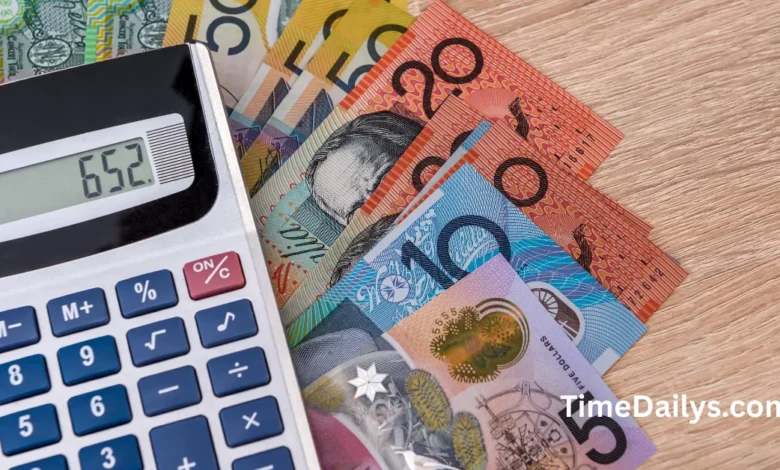Compare Volatility of Australian Dollar Forex Pairs: Risk vs Reward

Introduction: Understanding the Australian Dollar in Forex
The Australian dollar is one of the most widely traded currencies in the forex market. Known by its ticker symbol AUD, it’s closely linked to global commodities, risk sentiment, and Australia’s economic outlook. Traders often turn to Australian dollar pairs for opportunities, but volatility plays a major role in shaping both risks and rewards. Understanding how these pairs behave is key to building a sound trading strategy.
Why Volatility Matters in Currency Trading
Volatility measures how much and how quickly currency prices move. In forex, higher volatility often creates more trading opportunities but also increases the chance of losses. For the Australian dollar, this movement is influenced by global demand for commodities, interest rate decisions, and economic reports. Recognising these drivers allows traders to manage exposure while seeking profit.
Major Australian Dollar Pairs to Watch
The Australian dollar is traded against many currencies, but some pairs attract more attention due to liquidity and global importance.
AUD/USD: The Aussie and the Greenback
AUD/USD is the most traded Australian dollar pair. It reflects Australia’s trade relationship with the United States and reacts strongly to changes in commodity prices, particularly iron ore and coal. Because it’s liquid, spreads are usually tight, but volatility can rise quickly during US Federal Reserve announcements.
AUD/JPY: The Risk Sentiment Barometer
AUD/JPY is often seen as a measure of global risk appetite. When investors seek growth, the pair tends to rise. When markets turn cautious, it often falls. Volatility is higher compared to AUD/USD, making it appealing for traders who thrive on price swings.
AUD/EUR: Commodities Versus Europe
This pair balances Australia’s resource-driven economy against the eurozone’s large consumer market. Movements are shaped by both European Central Bank policies and Australia’s export demand. It tends to show moderate volatility, suitable for those who prefer balanced trading conditions.
AUD/NZD: The Battle of the Antipodes
Traders in the Asia-Pacific region closely watch AUD/NZD. Both currencies are linked to agriculture and commodities, so the pair reacts to regional developments. Volatility can spike around Reserve Bank announcements in either country.
Factors Driving Volatility in Australian Dollar Pairs
Commodity Prices
Australia is a major exporter of iron ore, coal, and natural gas. When commodity prices rise, the Australian dollar often strengthens. A sharp fall in global demand can trigger volatility as traders reassess Australia’s trade outlook.
Interest Rates and Central Bank Policy
The Reserve Bank of Australia (RBA) sets interest rates that influence capital flows. If Australian rates are higher than global averages, investors tend to buy the AUD, pushing it upward. Unexpected policy changes often trigger sharp moves.
Global Risk Sentiment
The Australian dollar is considered a “risk-on” currency. When global markets are optimistic, it usually gains. In times of uncertainty, investors shift to safer currencies like the US dollar, causing AUD pairs to drop.
Economic Data Releases
Employment figures, GDP growth, and inflation data often cause intraday volatility. Traders look for surprises in these reports, which can push the Australian dollar up or down within minutes.
The Risk and Reward Balance
The Rewards of Trading Volatile Pairs
High volatility provides more opportunities for profit. For example, a trader may capture quick gains in AUD/JPY when markets shift sentiment. Liquidity in AUD/USD also makes it easier to enter and exit trades at competitive prices.
The Risks of Volatile Pairs
Volatility can also lead to steep losses if positions aren’t managed carefully. Sharp reversals, especially around economic announcements, may hit stop-loss levels quickly. Without risk management, traders may lose more than they expected.
Managing Risk Effectively
To balance reward with safety, traders often use:
- Stop-loss and take-profit orders
- Smaller position sizes in highly volatile pairs
- A focus on major news events that drive movement
- Diversification across different pairs instead of relying solely on the AUD
Comparing Australian Dollar Pairs: Which Suits You Best?
- AUD/USD: Lower risk, steady moves, best for beginners
- AUD/JPY: High risk, high reward, suited for volatility seekers
- AUD/EUR: Moderate risk, good for balanced strategies
- AUD/NZD: Regional focus, best for those following Oceania markets
Each trader’s style determines which pair fits. Some prefer the relative calm of AUD/EUR, while others chase the dynamic swings in AUD/JPY.
FAQs
What affects the volatility of the Australian dollar?
The Australian dollar is influenced by commodity prices, interest rate changes, global risk sentiment, and local economic data.
Is AUD/JPY more volatile than AUD/USD?
Yes. AUD/JPY usually moves more sharply due to its link to global risk appetite, while AUD/USD is steadier thanks to high liquidity.
How can traders manage risks with Australian dollar pairs?
They can use stop-loss orders, manage position sizes, and monitor economic calendars to avoid surprises during key events.
Which Australian dollar pair is best for beginners?
AUD/USD is often recommended for new traders because it’s liquid, stable, and easier to analyse compared to more volatile pairs.
Conclusion: Final Thoughts on the Australian Dollar
The Australian dollar remains a key player in global forex trading. Its pairs offer a range of volatility levels, giving traders choices between steady opportunities and high-risk, high-reward scenarios. Understanding what drives the AUD, and balancing risks with proper strategies, helps traders make confident decisions.




